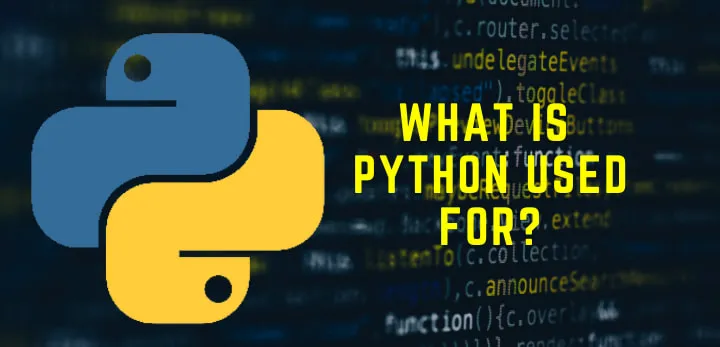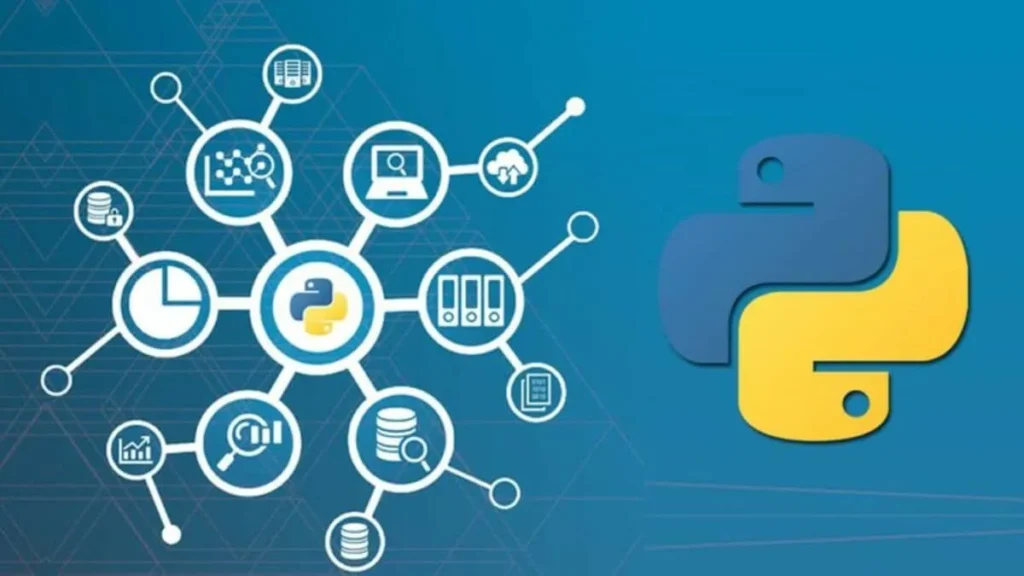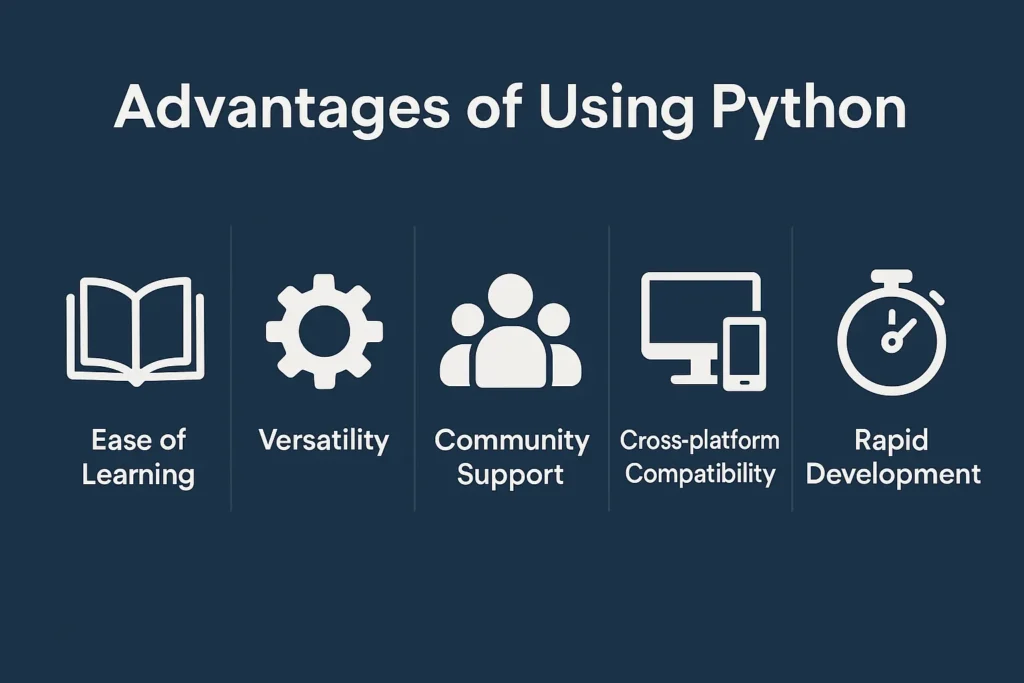
Executive Summary
Python is one of the most popular and versatile programming languages in the world. Known for its simplicity, readability, and extensive library ecosystem, Python has become a go-to language for beginners, professionals, and enterprises alike. Its applications span web development, data science, artificial intelligence, machine learning, automation, finance, and more.
This guide explores the diverse use cases of Python, its advantages, industry applications, popular frameworks, and how organizations and individuals leverage it to solve real-world problems. Whether you are a student, developer, or professional, this guide provides a complete overview of Python’s practical uses.
Table of Content
1. Introduction to Python
1.1 What is Python?
Python is a high-level, interpreted programming language created by Guido van Rossum in 1991. It emphasizes readability, simplicity, and ease of learning, making it an ideal language for both beginners and experienced developers. Python supports multiple programming paradigms, including:
- Procedural programming
- Object-oriented programming (OOP)
- Functional programming
Its vast library ecosystem and strong community support make it suitable for a wide range of applications.
1.2 Features of Python
- Easy to learn and read: Simple syntax that resembles natural language
- Open-source: Free to use, distribute, and modify
- Cross-platform: Works on Windows, macOS, Linux, and more
- Extensive libraries: NumPy, Pandas, Matplotlib, TensorFlow, Django, Flask
- Versatile: Used in web development, data analysis, AI, automation, and more
Recommended Python Courses to Boost Your Skills
Whether you’re starting from scratch or looking to explore AI applications in Python, these courses will help you level up:
- Python Basics Course – Learn the fundamentals of Python programming and build a strong foundation.
- Google Crash Course on Python – Fast-track your Python learning with hands-on examples and exercises.
- Introduction to Python – Understand Python syntax, data structures, and core programming concepts.
- AI Agents and Agentic AI in Python – Explore AI concepts and build intelligent applications using Python.
- Python Scripting Certification Training – Gain practical skills in scripting, automation, and real-world problem solving.
2. Python in Web Development
Python is widely used for building web applications, thanks to its frameworks and libraries that streamline development.
2.1 Popular Web Frameworks
- Django: High-level framework for building secure, scalable, and maintainable web applications
- Flask: Lightweight framework for smaller applications and APIs
- FastAPI: Modern, high-performance framework for building APIs quickly
- Pyramid: Flexible framework suitable for complex applications
2.2 Applications in Web Development
- E-commerce websites: Python frameworks help manage products, payments, and user authentication
- Content management systems (CMS): Websites like Plone and Wagtail use Python
- Social media platforms: Scalable backend systems for handling millions of users
- Web APIs: Providing data and services to mobile apps or third-party platforms
Example: Instagram’s backend uses Django to manage billions of daily interactions efficiently.
3. Python in Data Science and Analytics
Python has become the primary language for data science due to its simplicity, flexibility, and powerful libraries.

3.1 Data Analysis
- Libraries used: Pandas, NumPy
- Applications: Data cleaning, manipulation, statistical analysis, and visualization
- Example: Analyzing customer behavior in e-commerce platforms to improve marketing strategies
3.2 Data Visualization
- Libraries used: Matplotlib, Seaborn, Plotly
- Applications: Creating charts, dashboards, and interactive graphs for business insights
- Example: Visualizing sales trends and revenue patterns in real time
3.3 Big Data
- Integration with tools: Apache Spark, Hadoop, and Dask
- Applications: Handling large datasets efficiently, performing distributed computing
- Example: Processing millions of transactions to detect fraud in real time
4. Python in Artificial Intelligence (AI) and Machine Learning (ML)
Python is the preferred language for AI and ML projects due to its readability and extensive libraries.
4.1 Machine Learning
- Libraries used: scikit-learn, XGBoost, LightGBM
- Applications: Predictive modeling, recommendation engines, and classification tasks
- Example: Netflix recommendation system uses ML algorithms built in Python
4.2 Deep Learning
- Libraries used: TensorFlow, PyTorch, Keras
- Applications: Image recognition, speech processing, natural language processing (NLP)
- Example: Self-driving cars using Python-based deep learning models for object detection
4.3 Natural Language Processing (NLP)
- Libraries used: NLTK, SpaCy, Gensim
- Applications: Sentiment analysis, chatbots, language translation, and summarization
- Example: ChatGPT and other AI conversational tools leverage Python for NLP tasks
5. Python in Automation and Scripting
Python is widely used for automating repetitive tasks, saving time and reducing errors.
5.1 Automation Examples
- Web scraping: Extracting data from websites using BeautifulSoup or Scrapy
- Task automation: Automating file handling, reporting, and email notifications using scripts
- Testing: Automating software testing using Selenium or PyTest
- System administration: Automating server configurations and maintenance
Example: Automating Excel reports for a finance department, saving hours of manual work.
6. Python in Finance and Business
Python’s ability to analyze data and automate workflows makes it popular in the finance sector.
6.1 Applications in Finance
- Algorithmic trading: Python scripts to execute trades automatically based on market data
- Risk management: Analyzing market trends and calculating potential financial risks
- Financial reporting: Automating generation of income statements, balance sheets, and dashboards
- Portfolio management: Optimizing investments using Python-based analytics
Example: Banks use Python for fraud detection systems that analyze transaction patterns to prevent unauthorized activity.
7. Python in Game Development
Python is also used in game development, though less common than C++ or Unity, due to its simplicity and rapid prototyping capabilities.

7.1 Popular Game Libraries
- Pygame: Creating 2D games and interactive applications
- Panda3D: 3D game engine for Python
- Cocos2d: Framework for building games and graphical applications
7.2 Applications
- Prototyping game mechanics quickly
- Developing educational and indie games
- Building AI-driven non-playable characters (NPCs)
Example: Several educational games and simulations are built using Pygame due to Python’s simplicity and flexibility.
8. Python in Cybersecurity
Python is a key language in cybersecurity and ethical hacking because of its simplicity and library support.
8.1 Applications in Cybersecurity
- Penetration testing: Automating vulnerability scanning and exploitation
- Network monitoring: Detecting unauthorized access or suspicious activity
- Malware analysis: Understanding malware behavior using Python scripts
- Security tools development: Writing custom scripts and tools for cybersecurity
Example: Security analysts use Python to write scripts that detect network anomalies and automate vulnerability assessments.
9. Python in Education
Python is widely used as a first programming language for students and educators.
9.1 Why Python for Education
- Simple and readable syntax reduces the learning curve
- Supports problem-solving and logical thinking
- Used in interactive tutorials and coding platforms
9.2 Applications
- Teaching programming concepts
- Developing educational apps and games
- Conducting data science and AI workshops
Example: Platforms like CodeAcademy, Coursera, and Udemy use Python in beginner coding courses due to its simplicity.
Related Topics to Explore
Python plays a vital role across data science, analytics, and modern business operations.
To dive deeper into how Python supports different professional and technical domains, check out these related guides:
- How to Become a Data Scientist – Learn how Python serves as a foundation for data analysis, AI, and machine learning projects.
- What Does a Data Engineer Do? – Discover how Python is used to build, clean, and manage data pipelines.
- What Is Data Management? – Understand how Python tools help store, process, and govern data effectively.
- How to Become a Business Analyst – Explore how analysts use Python for insights, reporting, and decision-making.
- What Is Project Management? – See how project managers apply Python automation to streamline workflows.
10. Python in Robotics and IoT
Python is increasingly used in robotics and Internet of Things (IoT) projects for automation and control.
10.1 Applications
- Controlling sensors and actuators in robots
- Processing data from IoT devices for monitoring and automation
- Integrating AI for autonomous robots
Example: Raspberry Pi projects often use Python to control smart home devices and DIY robots.
11. Advantages of Using Python
Python’s versatility makes it suitable for a variety of applications. Key advantages include:

- Ease of Learning: Simple syntax makes it beginner-friendly
- Versatility: Can be used for web development, AI, data science, automation, and more
- Community Support: Large community with extensive documentation and libraries
- Cross-platform Compatibility: Runs on multiple operating systems
- Rapid Development: Enables quick prototyping and faster deployment
12. Popular Python Libraries and Frameworks
| Category | Libraries / Frameworks | Use Cases |
|---|---|---|
| Web Development | Django, Flask, FastAPI | Building web apps and APIs |
| Data Analysis | Pandas, NumPy, Matplotlib | Data cleaning, visualization, and analysis |
| Machine Learning | scikit-learn, XGBoost, LightGBM | Predictive modeling and analytics |
| Deep Learning | TensorFlow, PyTorch, Keras | Neural networks, image and speech recognition |
| Automation | Selenium, BeautifulSoup, PyAutoGUI | Web scraping, task automation, testing |
| Game Development | Pygame, Panda3D | 2D and 3D game development |
| Cybersecurity | Paramiko, Scapy | Network monitoring and penetration testing |
| Robotics & IoT | RPi.GPIO, MicroPython | Controlling devices and sensors |
13. Industry Applications of Python
13.1 Technology Companies
- Used in AI, web services, cloud computing, and automation
- Companies like Google, Instagram, and Spotify rely heavily on Python
13.2 Finance and Banking
- Risk analysis, algorithmic trading, fraud detection, and reporting
13.3 Healthcare
- Data analysis, predictive modeling, and bioinformatics
- Applications in medical imaging, patient monitoring, and drug discovery
13.4 Retail and E-commerce
- Customer data analysis, recommendation systems, inventory management
13.5 Education
- Teaching coding, AI, and data science concepts in schools and universities
13.6 Manufacturing and Robotics
- Robotics control, IoT device management, and automation of processes
14. Getting Started with Python
14.1 Installation
- Download Python from the official website (python.org)
- Use package managers like pip to install libraries
14.2 Learning Resources
- Online tutorials: Codecademy, Coursera, Udemy
- Books: “Automate the Boring Stuff with Python”, “Python Crash Course”
- Practice platforms: LeetCode, HackerRank, Codewars
14.3 Tips for Beginners
- Start with basic syntax and concepts: variables, loops, functions
- Practice small projects to reinforce learning
- Gradually explore libraries for web development, data science, or AI
15. Conclusion
Python is one of the most versatile and widely-used programming languages today. Its simplicity, cross-platform capabilities, and extensive library ecosystem make it ideal for web development, data science, machine learning, AI, automation, finance, robotics, and education.
Whether you are a beginner or a professional, Python offers endless opportunities to solve real-world problems, build innovative solutions, and advance your career. Learning Python is not just about coding—it is about empowering yourself to create, automate, and innovate across industries.


